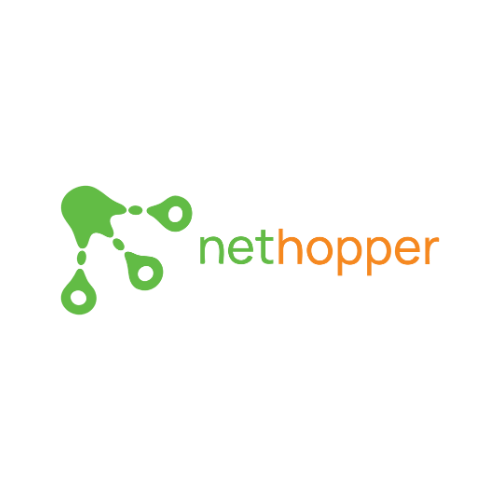CEO Blog: Modern Applications and the Rise of the Cloud-Native Internal Developer Platform (CN-IDP)
- Chris Munford

- Feb 21, 2024
- 4 min read
Updated: Aug 18
By Chris Munford, CEO and founder of Nethopper.io

Digital Transformation Requires Modern Software Applications
I know… Digital Transformation is such a broad and fluffy term. It implies that Enterprise businesses are naturally and effortlessly going to blossom into a well run digitally automated machine. The harsh reality is that Digital Transformation is unnatural, uncomfortable, and most often unsuccessful.
However, Digital Transformation is undeniably important, as it will likely determine the success or failure of a business. Businesses that successfully transform have something in common; they become very efficient at producing modern software applications, often 1000’s of them. These applications can be used both internally and externally. Internal applications increase productivity and are the tools that make the company run. External apps attract, retain, support and charge customers.
Although they don’t get the same press as Data and AI, modern software applications are arguably more important to business than Data and AI.
Neither Data nor AI are effective without modern software applications.
For example, a business may have all the right data to make great data-driven decisions, but a software application is required to retrieve, correlate, analyze, and display that data to the decision maker. Think about one instance, such as Artificial Intelligence, especially GenAI and LLMs, which is often praised as being the future of work, and promises to make us all more productive. However, humans can’t interface to graphics processors and LLMs. AI can not be experienced by humans without a software application.
GPT would be of little value without OpenAI.com and other websites that let you interact with it. Those websites and AI tools are modern software applications.
Cloud computing enables applications to leverage remote servers for storage, processing, and scalability. This promotes flexibility, accessibility, and cost-effectiveness.
Microservices architecture breaks down applications into smaller, independent services, fostering agility, ease of maintenance, and scalability.
User-centric design emphasizes intuitive interfaces, seamless user experiences, and responsiveness across various devices.
Additionally, modern software applications often embrace DevOps practices, promoting collaboration between development and operations teams, facilitating faster releases and continuous integration.
In contrast, traditional software applications were typically monolithic, residing on local servers, with development cycles characterized by lengthy release cycles and limited user interactivity. Upgrades and maintenance were cumbersome, and scalability was a constant challenge.
The Challenge of Modern Application Development
While the velocity and value of a modern app can be far greater than a traditional one, making a modern software application is not easy. One study says that as high as 79% of attempts fail. With so much riding on the success of these applications, why do these efforts fail so often?
Some of the common reasons for failure include:
Lack of planning, requirements, and expectations
Inadequate team communication and collaboration
Complexity of new technologies and processes
Insufficient skills
Instead of diving into each of these categories, let’s discuss what they all have in common. They all increase cognitive load on the developer. Cognitive load leads to decreased productivity, project delays, budget overruns, and eventually failed projects. Developers have always had a high cognitive load, having to be experts in software programming languages, project requirements, system design methodology, etc.
However, there are many new sources of cognitive load introduced by cloud and open source software, causing developers to also learn and worry about:
New and changing Cloud Infrastructure
Increased Cloud-induced security measures
Micro-services interactions with other developers
Dependencies on cross-functional teams: DevOps, SecOps, SREs, IT, Cloud Engineers
Creating and maintaining software containers (ie: docker)
Deploying, Observing, and upgrading software containers in Kubernetes
1000’s of open source tools to master
Consider the diagram below. The developer should only have to focus on their application (My App), but look at all of the other sources of cognitive load distracting them from My App.

Of course, the natural response to this, for enterprises that can afford it, is to hire more staff (developers, operators, cloud and IT folks). However, this often has the opposite of the desired effect, increasing the number and type of interfaces that a developer has to maintain, and processes they have to follow; further increasing cognitive load on the developer.
The Rise of the Internal Developer Platform (IDP)
Many enterprises are reducing developer cognitive load and increasing productivity with the introduction of an “Internal Developer Platform.”
An Internal Developer Platform (IDP) is the sum of all the tech and tools that a platform engineering team binds together to pave golden paths for developers. IDPs lower cognitive load across the engineering organization and enable developer self-service, without abstracting away context from developers or making the underlying tech inaccessible. Source: What is an Internal Developer Platform, by Kaspar von Grünberg
Now, consider the diagram below showing the developer cognitive load using an IDP:

Platform engineers designed the IDP so the developer only has to maintain one simple interface to the IDP, allowing the developer to focus on what matters, developing new application features, faster. This accelerates the return on investment to the business, which increases the value of the application, and the chances for successful business outcomes and digital transformation.
Well designed IDPs follow a Platform as a Product approach, where a platform team builds, maintains and continuously improves the IDP, following product management principles and best practices.
Stay tuned for more on this topic. Meanwhile:
Subscribe to our YouTube channel
If you'd like to learn more about Cloud Native IDP, please visit www.nethopper.io or connect with me on LinkedIn.
Thank you for reading.



